Text by Marco Ghezzi | Photos by Marco Ghezzi and Matteo Cantatore | This publication is a collab between Marco Ghezzi, an Italian journalist focused on motorcycle tourism and promoting electric mobility through the eV-Now! Foundation and THE PACK.
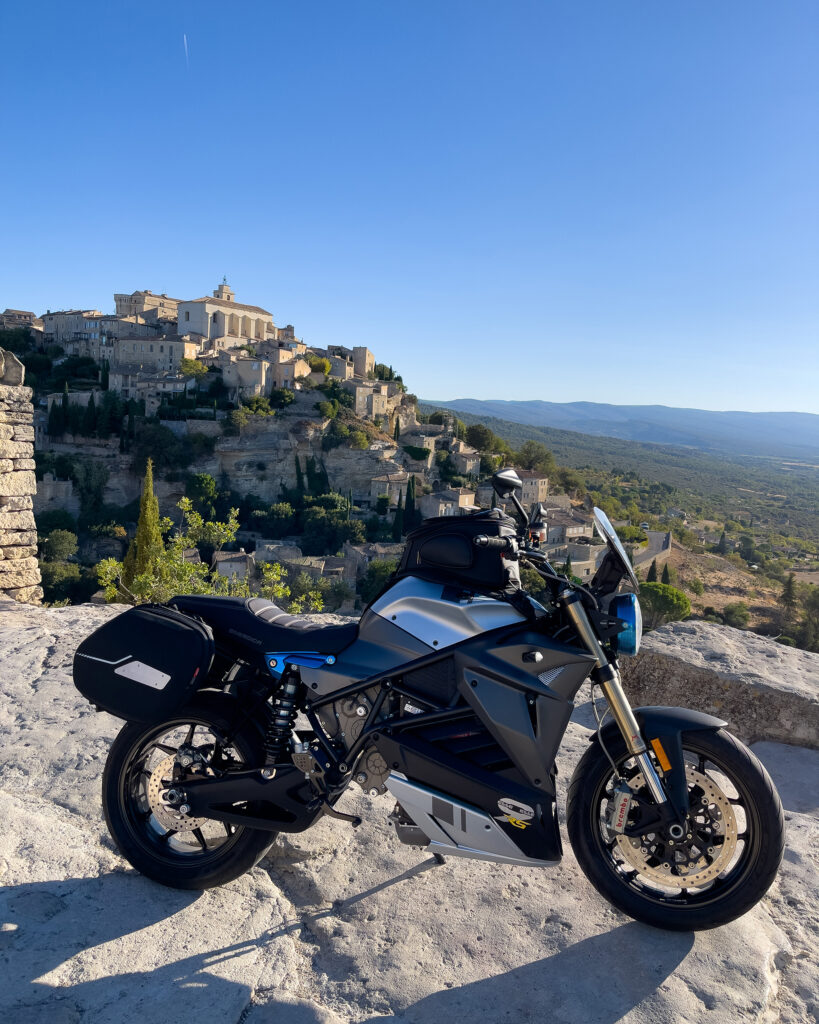
Standing on the natural balcony of Rocher Bel Air, we admire the enchanting view that opens up to Gordes, perched on top of a hill, with its white stone houses clustered around the ancient castle. Gordes is one of the ‘Villages Perchés,’ the perched villages, delightful hamlets that characterize the Luberon region, becoming a true attraction, but not the only one. This area of Provence offers a concentration of beauties to be discovered at a leisurely pace, allowing oneself to be amazed by nature taking center stage with the wild landscapes of the Luberon Natural Park and the Monts de Vaucluse. Wandering along lonely lanes carved between limestone cliffs, which narrow to form dramatic gorges and canyons. Strolling amidst the vibrant colors of the ochre lands, an incredible natural tableau with endless shades of yellow, orange, and red. Or immersing oneself in man-made environments, like the mines, where shadowy tunnels disappear into the depths of the mountains. Luberon is a beautiful discovery that truly touches the heart!
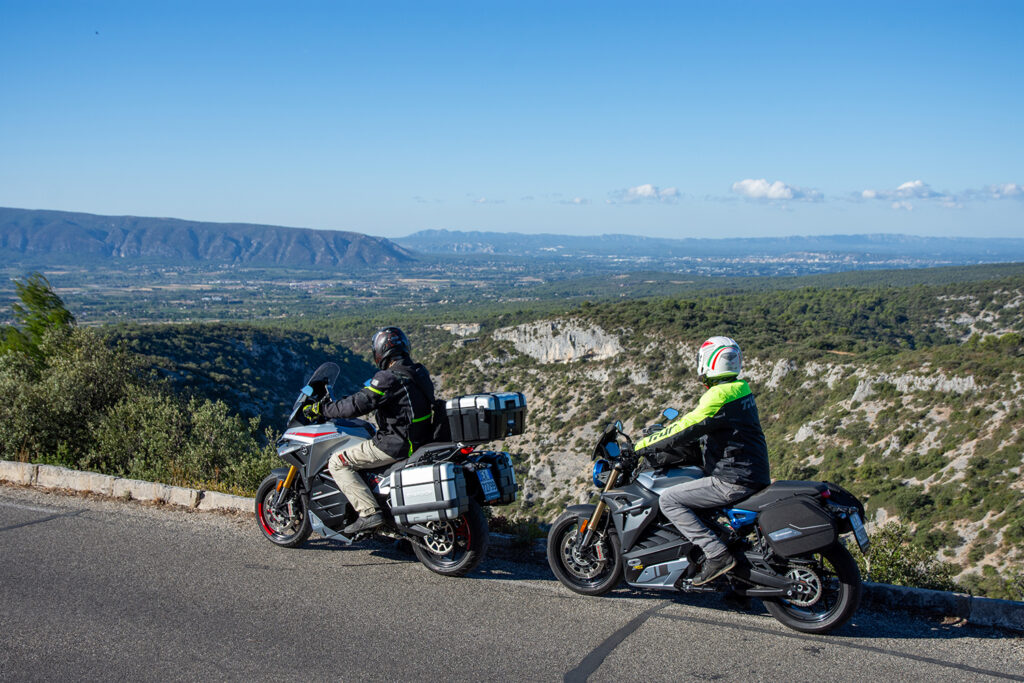
Our electric motorcycles, an Experia and an EsseEsse 9, are fully charged and with them, we will experience the pleasure of traveling electrically, sustainably, and emitting only a whisper, in the respectful silence of the magical atmospheres of this region. This allows us to experience that special feeling of even greater immersion in the nature and places we pass through. The winding mountain paths and the lanes that cross through countryside and villages create the ideal setting for the electric motorcycle to best showcase its potential.
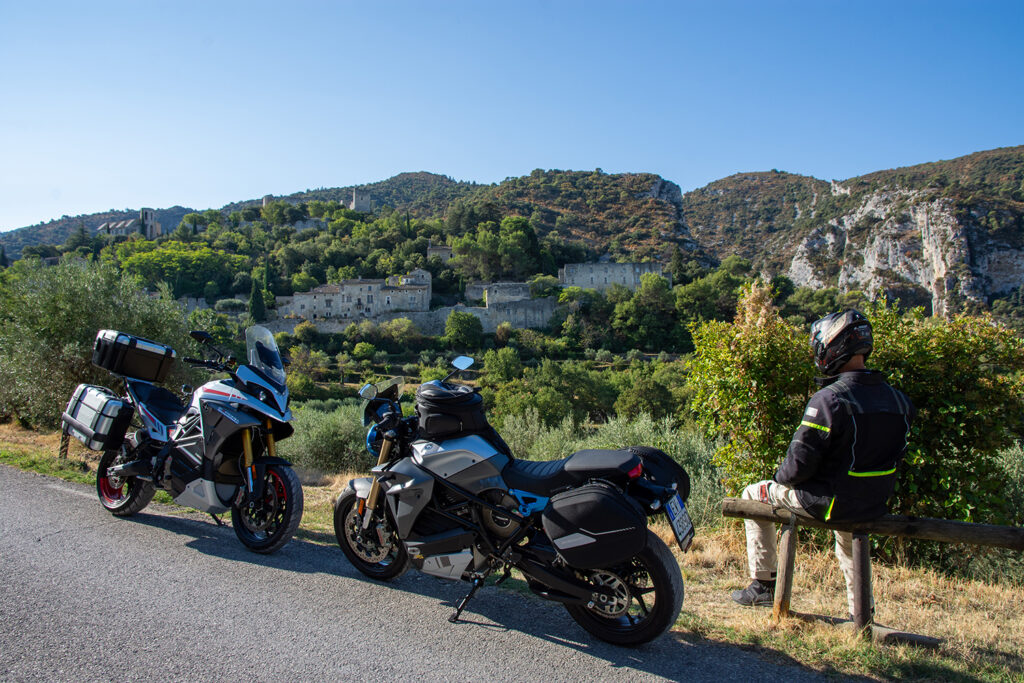
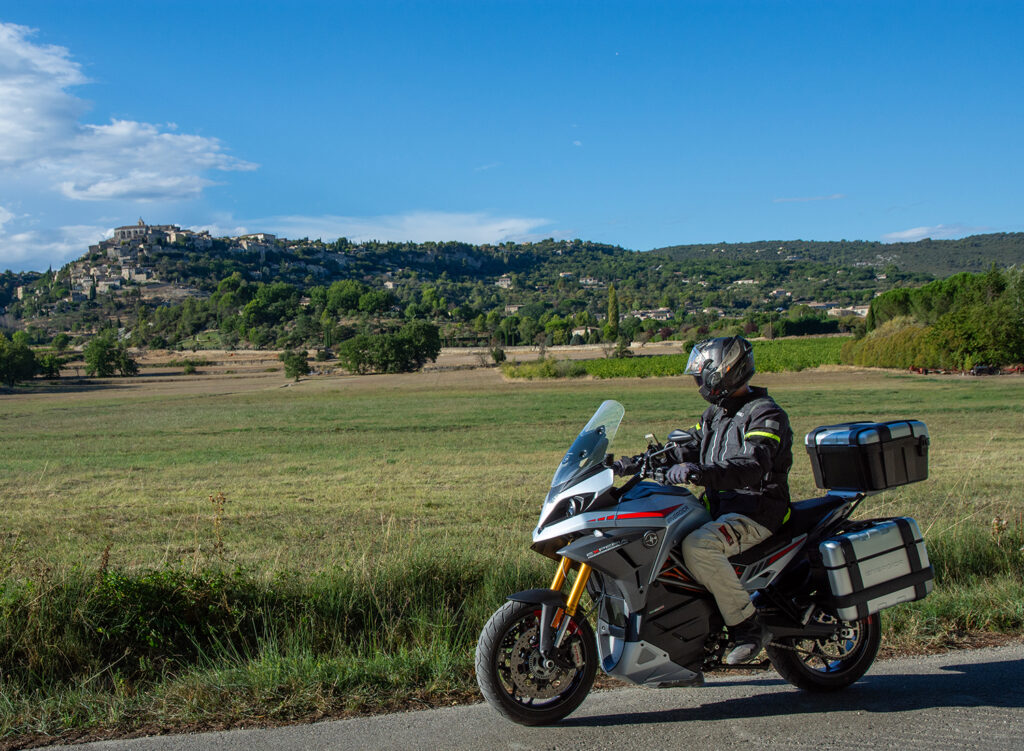
Oppede Le Vieux is the first ‘perched’ village on our route, welcoming us with views of ancient dwellings built against the limestone cliffs or hidden among the vegetation. The village can only be explored on foot, and our steps echo along the cobblestone streets, through narrow alleys and among the stone houses, as we proceed wrapped in a magical atmosphere, feeling as if suspended in time. What we appreciate is not finding ourselves in an open-air museum but in a real, inhabited, and lively village where daily life flows at a gentle pace.
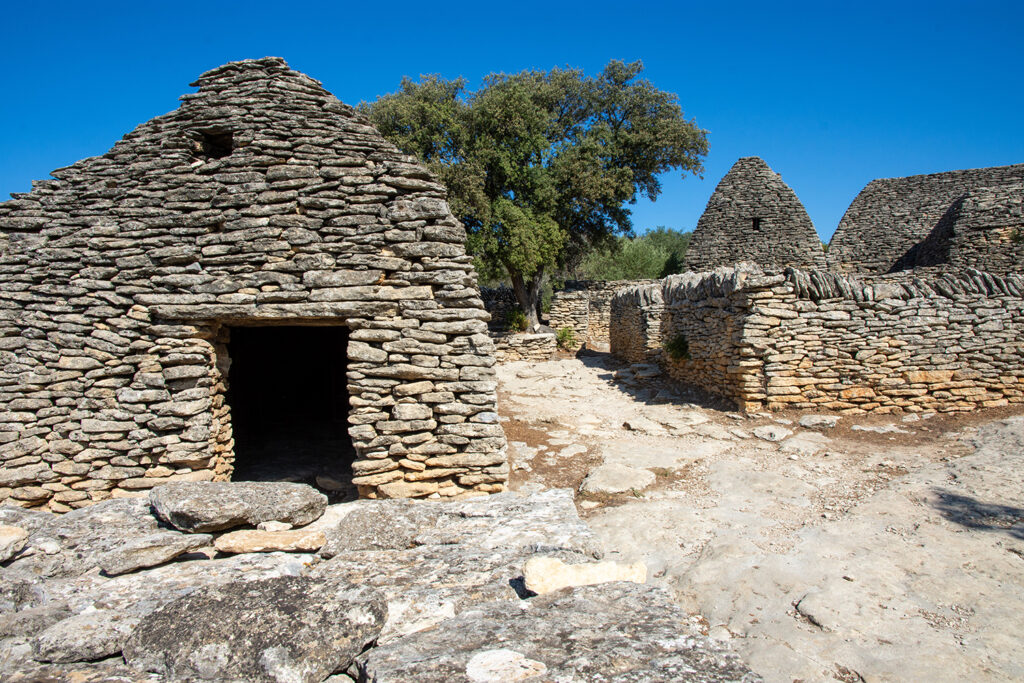
A few kilometers on, we reach another truly unique place, the Village des Bories. A splendid example of dry stone wall architecture typical of this area, the ‘bories’ are huts of various sizes, skillfully built by stacking stones. As we move among houses, stables, barns, and bread ovens, it seems incredible that these ancient structures maintain their perfect shapes, defying time with just the interlocking of stones.
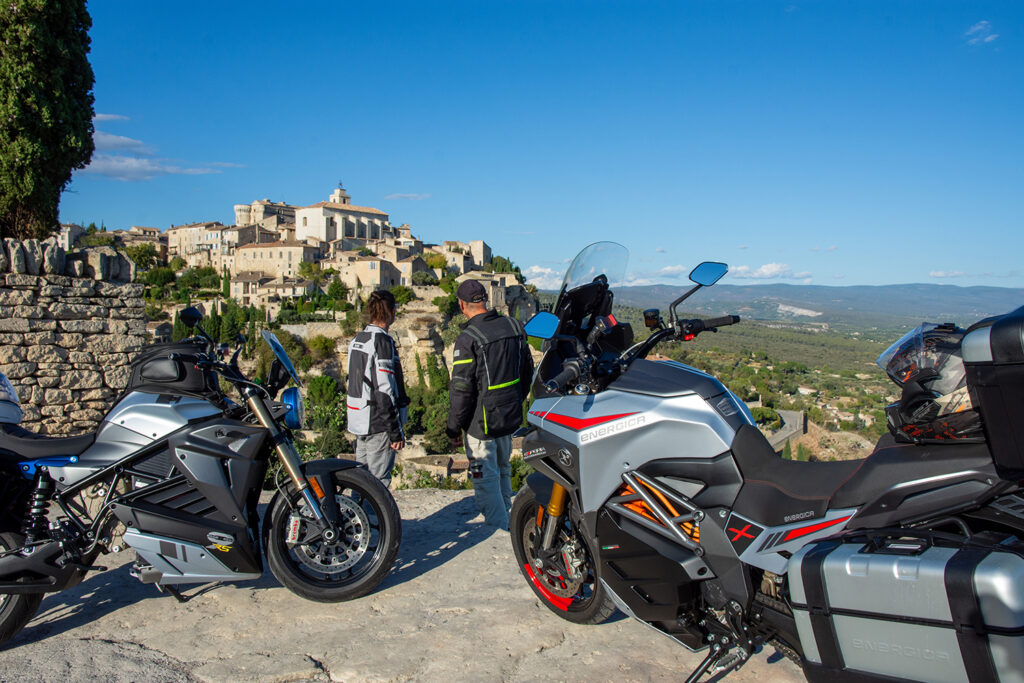
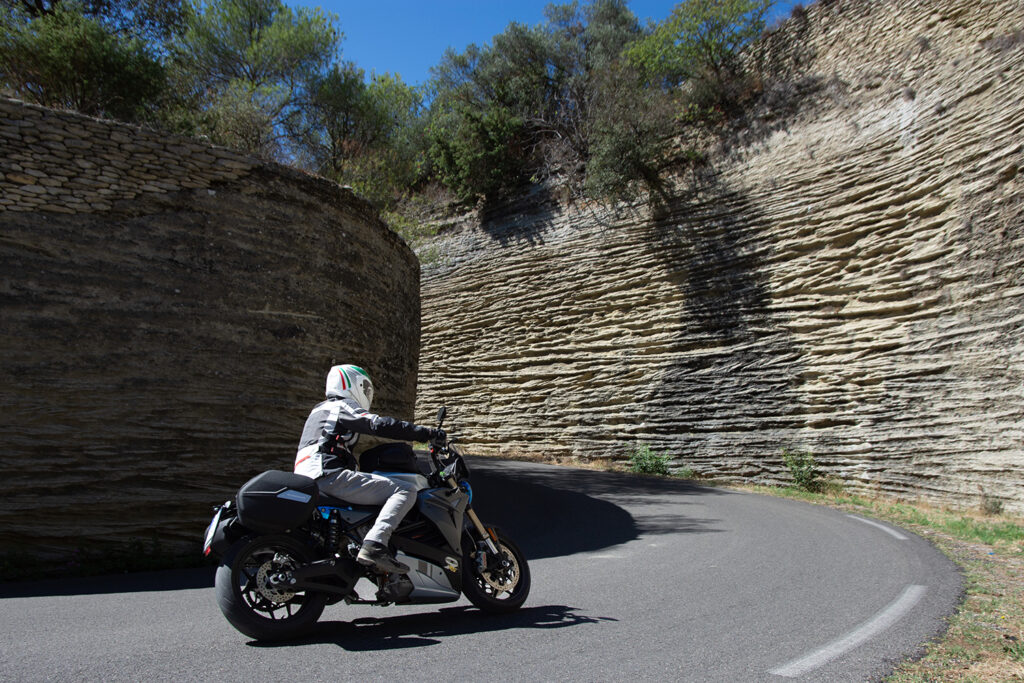
The same technique is used in the walls that rise like evocative tunnels along the lanes around Gordes, the most famous and scenic of the ‘perched’ villages. The charm of this village and its past are experienced as we stroll through the maze of alleys and narrow streets, imagining the flow of daily life that animated the village for centuries. Entering through the Porte de Savoie we ascend from the Fontaine Basse district, where people used to come to wash clothes, to reach the characteristic fountain of Place Pantaly. This was the central place in Gordes’ life because, until 1956, it was the only access point to drinking water for the entire population.
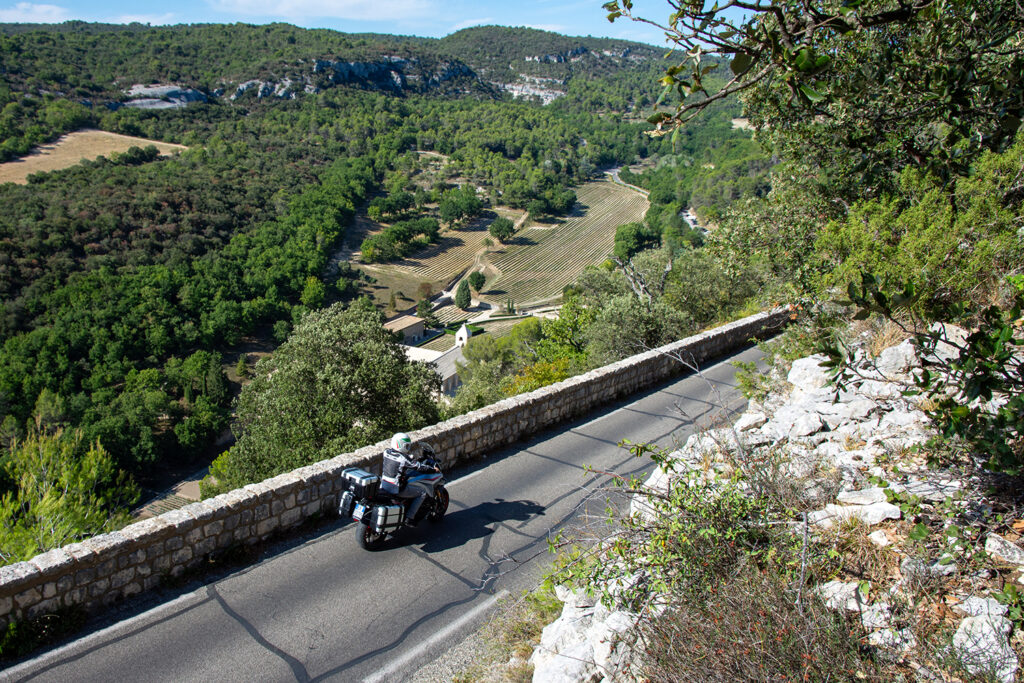
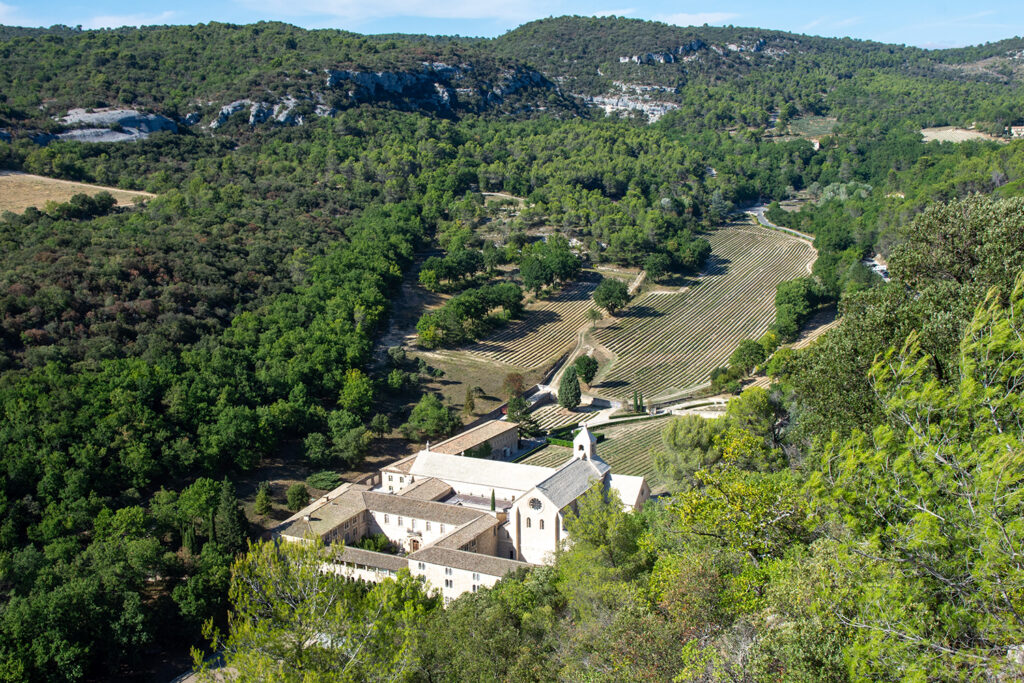
From Gordes, the road climbs through wide panoramas, then transforms into a dizzying balcony overlooking the narrow valley where the Abbey of Senanque stands out. Still inhabited by a community of monks today, it is a mystical place, immersed in silence and surrounded by lavender fields cultivated by the monks themselves. During the flowering period, these fields offer an unmissable spectacle of colors and scents.
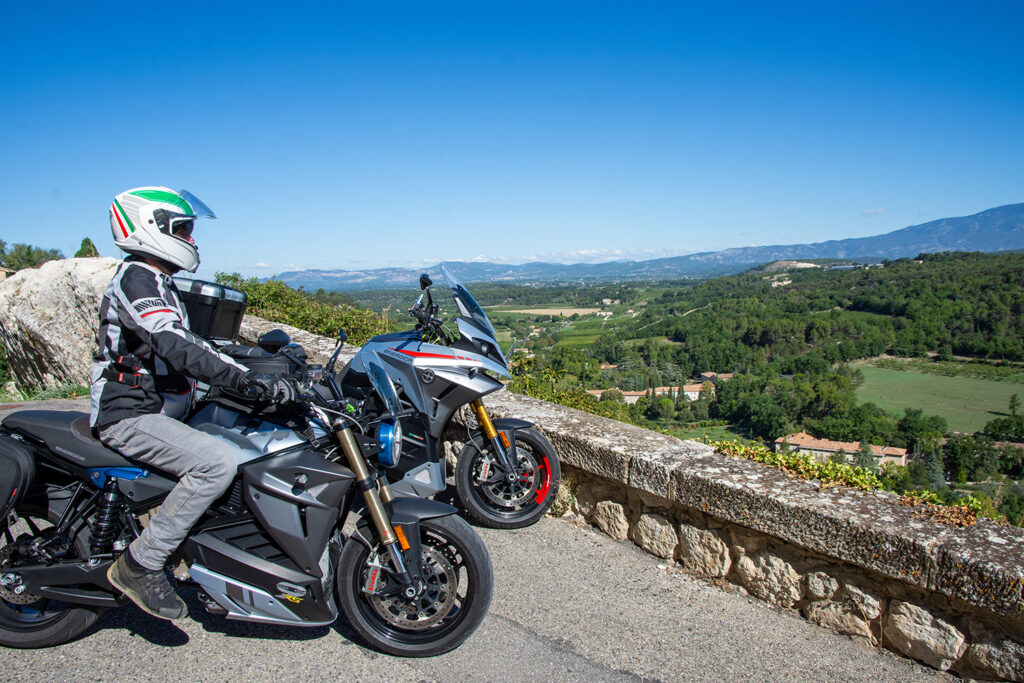
The beautiful curves of the climb to the Col de Trois Termes provide an opportunity to let our electric motorcycles unleash their potential, thrilling us with their responsive engines, great handling, and excellent road holding.
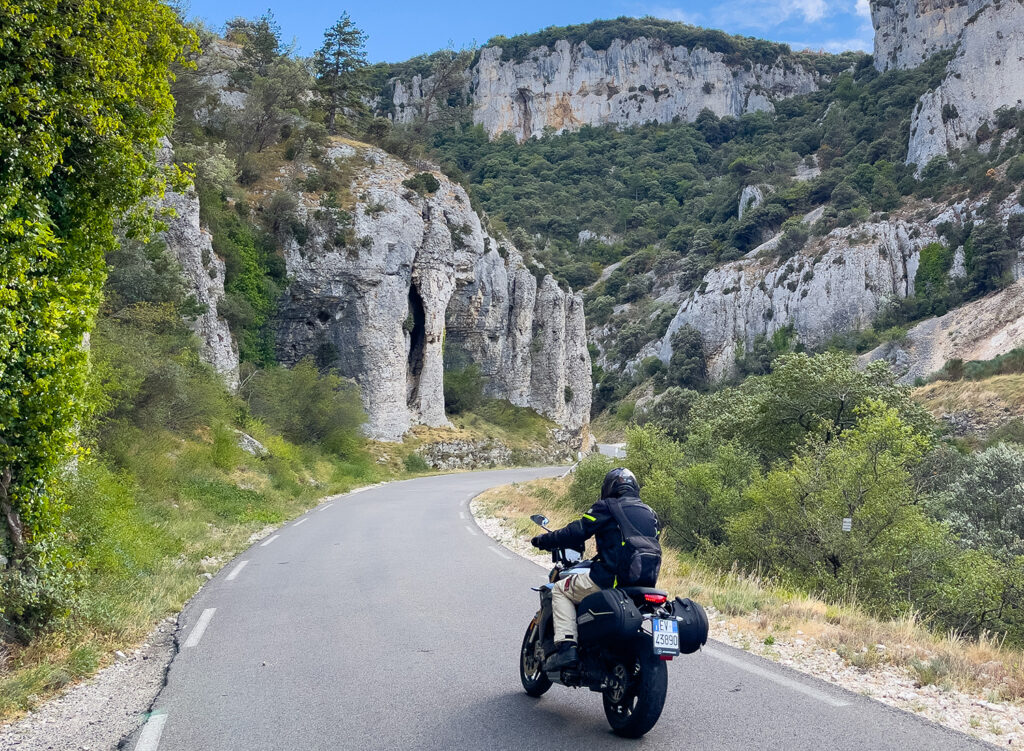
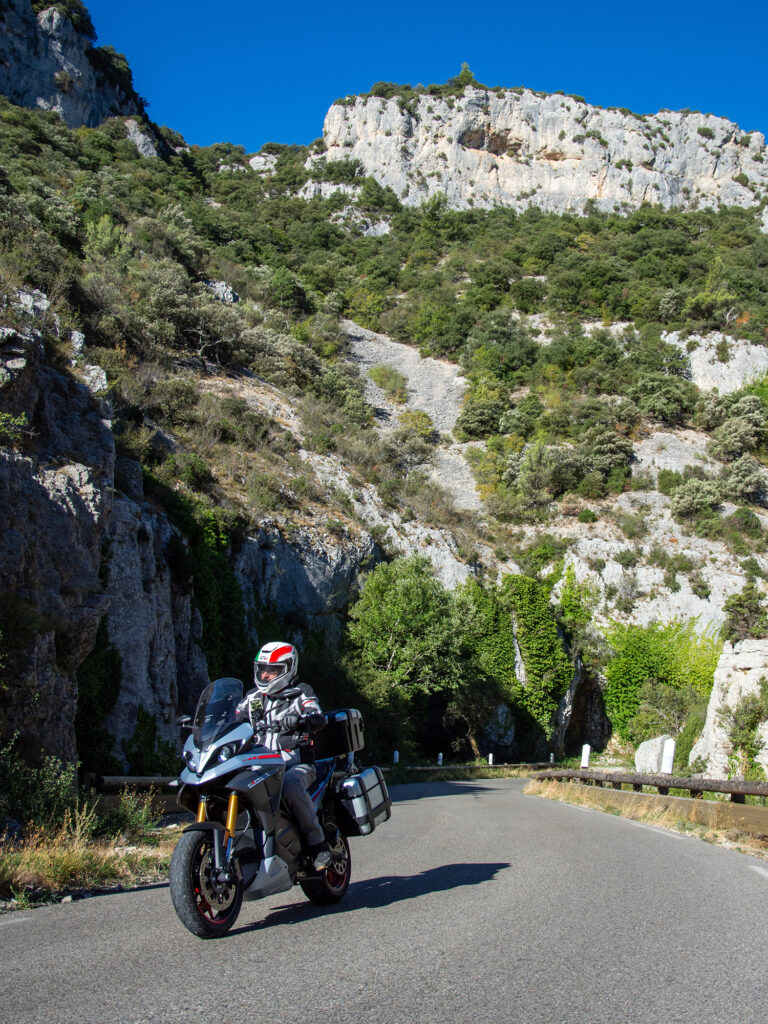
When we enter the Combe de Murs, a narrow gorge where the road continues windingly between increasingly high and looming rock walls, only the slight whir of the motor echoes as we pass, then fades among the folds of the mountain, making us appreciate once again the charm of electric travel.
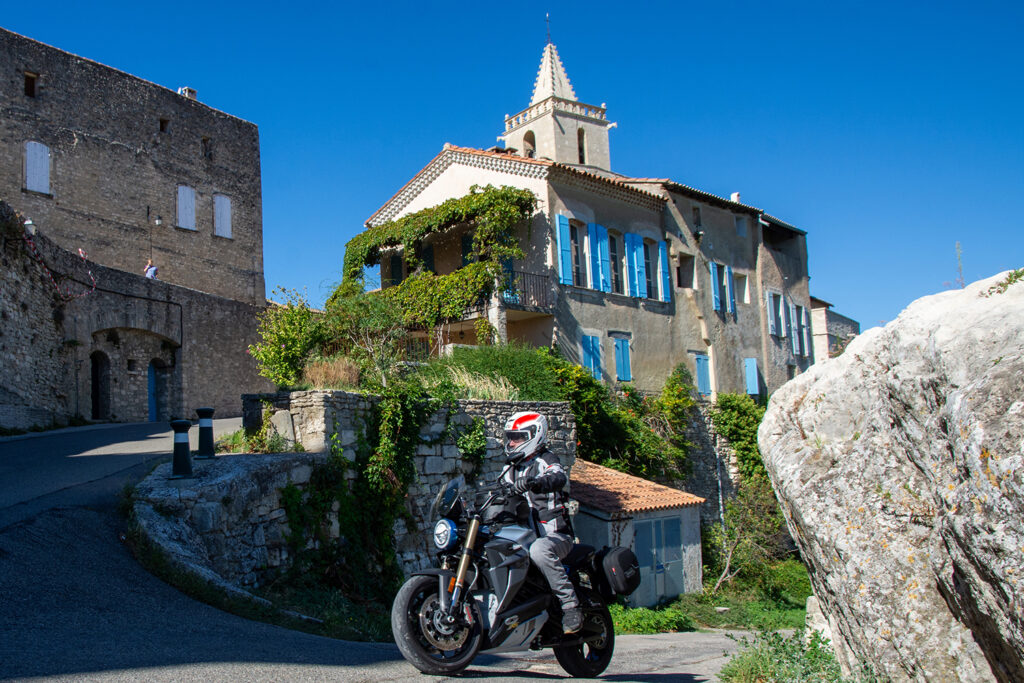
At the end of the Combe lies Venasque, perched on a spur of white rock. A quiet village, with lively shops along the narrow streets and a beautiful panorama opening towards the Luberon hills. An ideal place to recharge both relaxingly and energetically. Indeed, at the entrance to the village, a charging station proudly stands; truly a surprise in this ancient place, but also a sign of a new era advancing.
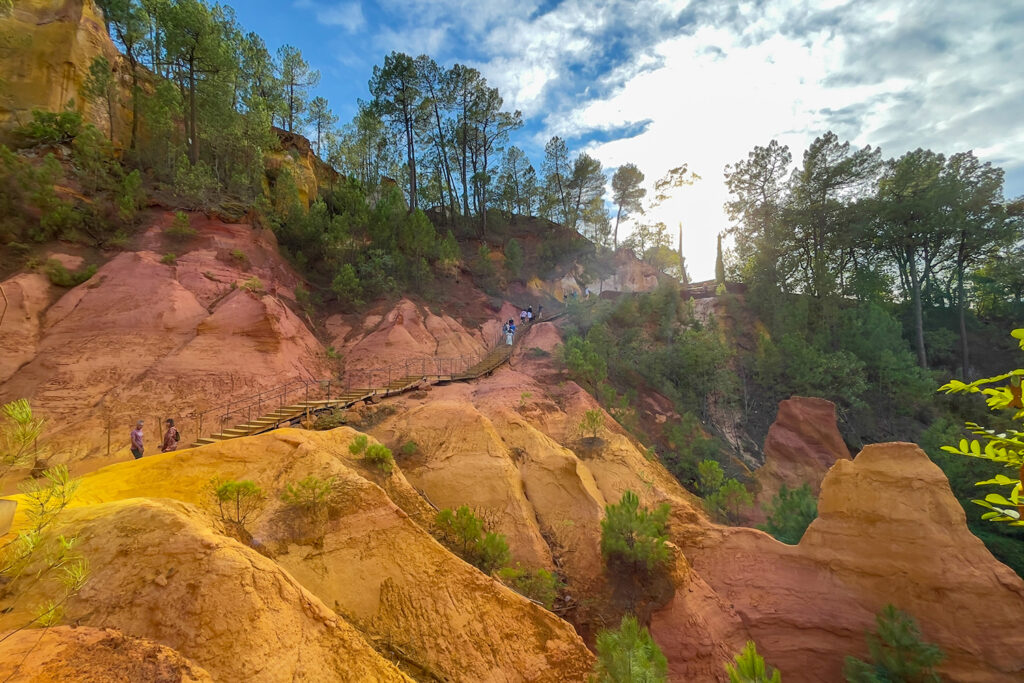
From the white stones of Venasque, we move to the magical landscapes of the Ochres of Luberon, a unique place in Europe. Along the Ochre Trail, pinnacles, rock formations, and earth walls carved by wind and water create a fantastic scenery, especially at sunset, when the colors become increasingly intense red. Ochre, used as a pigment for various products, was known since Roman times, but exploitation began only around 1800.
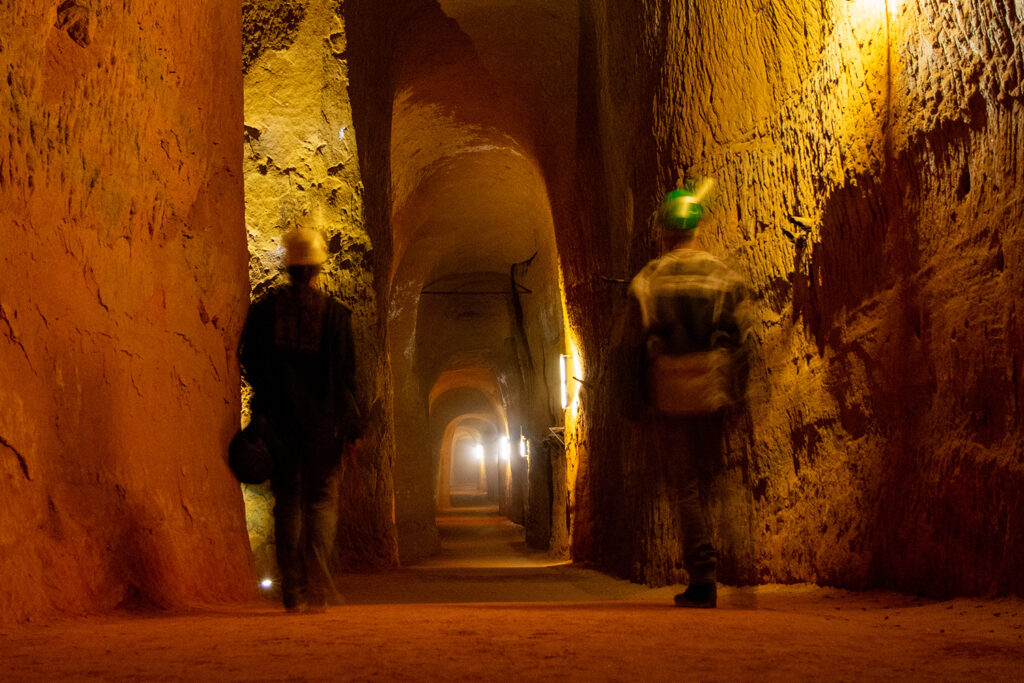
The nearby Bruoux mines are a testament to the industrial epic that lasted more than a century, during which miners, using only their hands and pickaxes, and the weak light of carbide lamps, dug more than 40 km of tunnels. A huge underground labyrinth and another unique place in the Luberon, to be explored along the tunnels that disappear into the darkness, taking us ever deeper into the heart of the mountain and perhaps, also into the heart of Provence.
Traveling Electric
This itinerary was a true journey in the spirit of electric mobility. Riding the EsseEsse9 RS and Experia models, both from Energica Motor Company, we had a full electric experience, once again appreciating all the advantages this way of traveling offers: the extreme simplicity in riding enhanced the sensations and allowed us to enjoy the entire itinerary with great relaxation. The absence of heat and vibrations made the hours in the saddle even more comfortable, while the low noise of the two motorcycles enhanced our immersion in the calm atmospheres that characterize this region.
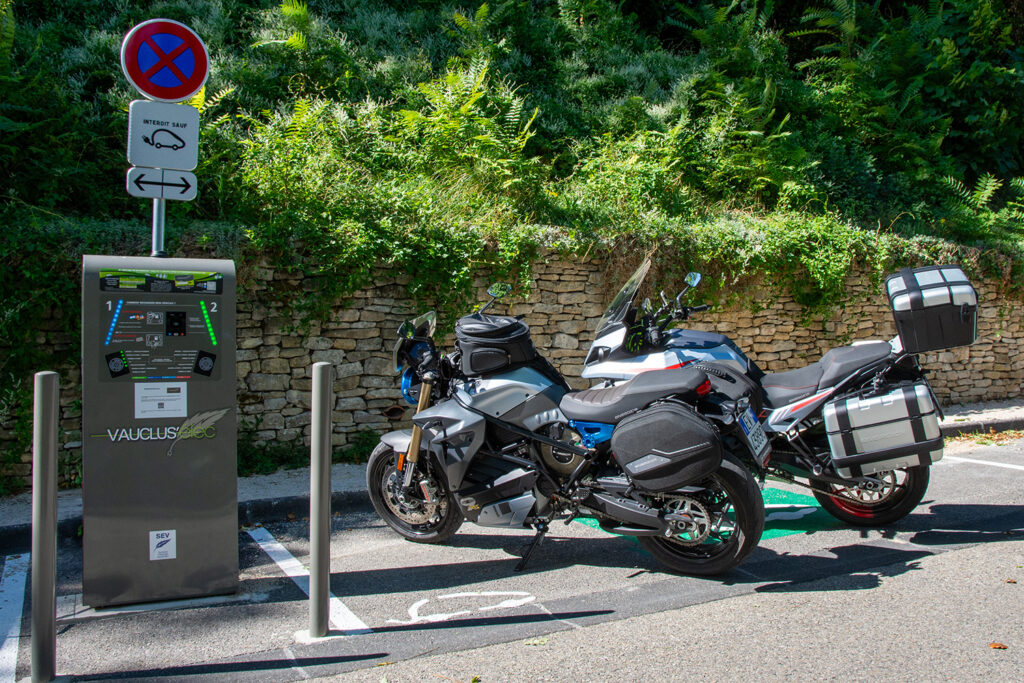
The range of these models is more than adequate for touring use. Equipped with a battery of about 21 kW/h, they allowed at least 150 km of range under the most challenging conditions – constantly traveling at 120/130 km/h on the highway – and nearly 240 km in mixed use. In general, urban consumption was around 7 kW/h per 100 km, highway consumption at 11 kW/h per 100 km, and average extra-urban consumption at 9 kW/h per 100 km. These values, it should be noted, depend greatly on driving style. Both models can also accept AC charging and, through the European standard Combo 2 plug, DC fast charging. The latter allows a charge from 0 to 80% in less than an hour. Fast charging stations are not very numerous in the Luberon and are located in Cavaillon and Manosque. However, the short distances of the itinerary allow for less frequent recharging.